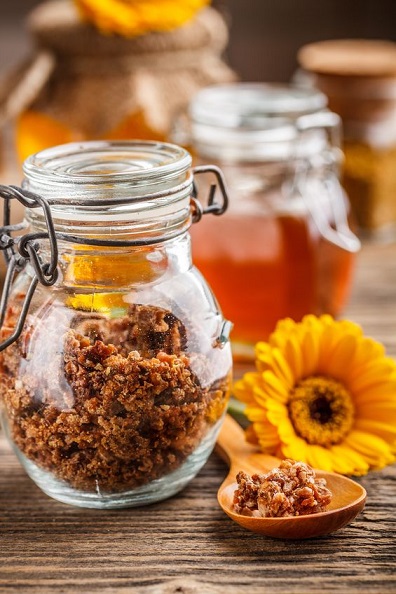 There’s a big misconception with acne that pharmaceutical antibiotics or benzoyl peroxide are trusted, and proven, and that experimenting with natural remedies is a severely dangerous gamble.
There’s a big misconception with acne that pharmaceutical antibiotics or benzoyl peroxide are trusted, and proven, and that experimenting with natural remedies is a severely dangerous gamble.
This is completely false, but it’s always great to have proof, even if some plant extracts are so amazing for oily skin that they might as well be proven.
Therefore, here are 7 natural topical treatments where the last niggling doubts are quashed. Here are 7 plants and oils shown directly to reduce acne. Not inflammation, not p.acnes bacteria, not oily skin – acne itself.
The criteria is strict: all studies are on humans, not rats or aliens or mole people or clowns.
These natural remedies aren’t necessarily the greatest on Planet Earth, as great ones like royal jelly are still untested. Scientists can be totally random, getting completely obsessed with green tea (5 studies to its name) while walking past raw honey as though invisible.
Nevertheless, this is the elite club where the acne evidence is almost a landslide. Some are popular already in DIY natural circles, others are obscure, but none are widely recommended by dermatologists.
One – aloe vera
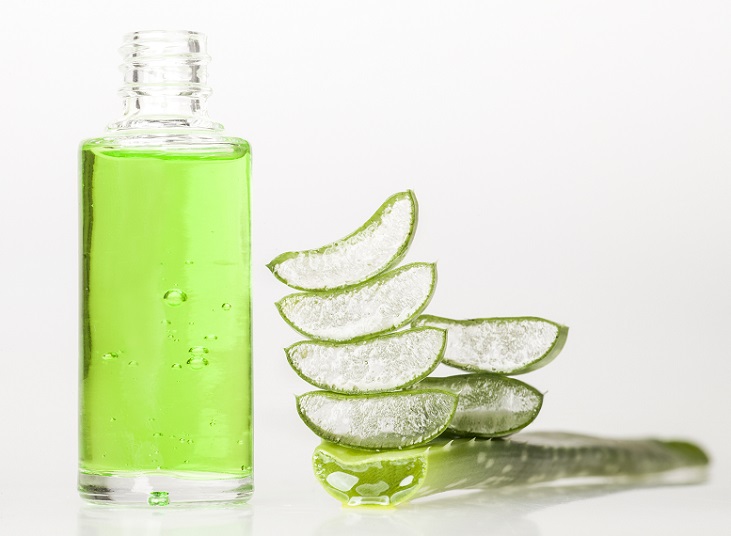 If this green gel had no studies to its name whatsoever, I would still recommend it. But luckily, it does.
If this green gel had no studies to its name whatsoever, I would still recommend it. But luckily, it does.
Aloe vera is a plant with miracle written all over it. Its gel is so colourful, misty and rich-looking that your gut instinct says it has some incredible powers. Anti-inflammatory studies were always plentiful, but a voice at the back of your mind would still ask: “is this a complete waste of time?”.
Those doubts ended in 2012 (unlike the world). The popular pharmaceutical remedy tretinoin was applied to 60 acne patients’ faces, either alone or alongside 50% concentration aloe vera.
After 8 weeks, acne plummeted by 65% in the tretinoin group, an exciting result. Yet by adding aloe vera, this reduction jumped to 90%.
Visual skin redness also plummeted. Aloe vera significantly reduced inflammatory acne, non-inflammatory acne, and total acne lesions. The participants had “mild to moderate” acne – possibly the same as you.
The story continued in 2014 with 40 human beings, again with mild to moderate pimples (study). There was a clear-cut dividing line, with two groups of 20 applying either a placebo or freshly prepared aloe vera juice for 4 suspenseful weeks. The age range was 12-27, and the mean age was 17.5, a useful study for teenagers.
This time, the differences were smaller, but still promising. Inflamed acne fell by 11%, total acne fell by 6%. Non-inflammatory acne remained steady, while the controls barely altered. This fits in neatly with aloe vera’s dazzling array of anti-inflammatory compounds.
The latest contender is this fantastic study on an aloe vera, tea tree oil and propolis combo, testing 3 of this list’s candidates. It’s impossible to identify which remedy reduced acne most powerfully – some could have contributed nothing – but the trusted acne severity index (ASI) fell by 66.7% after just 30 days.
Aloe vera seems to have the most momentum of any remedy. New studies are popping up like a game of whack a mole. The plant is native to Texas and Mexico, so it’s possible that even Native Americans once exploited it, discovering the cure for acne. Maybe the wise medicine men wisely passed this knowledge down generation to generation, before it slowly fizzled out, into the mists of time, forcing today’s bespectacled scientist to discover it all over again.
Any lingering doubts? Very few. Its compounds are so diverse that there’s an increased chance of a rogue sensitivity.
Two – propolis
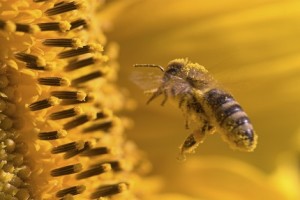 Propolis is part of the honeybee roster, alongside royal jelly, honey and bee pollen. But something unique it boasts is direct studies on acne.
Propolis is part of the honeybee roster, alongside royal jelly, honey and bee pollen. But something unique it boasts is direct studies on acne.
What is propolis exactly? It’s dubbed “bee glue”, a sealant manufactured by bees to repair breaches in their hives. It consists of plant matter gathered from leaves, bark and flower buds.
If anything, it sounds the most mundane of the three. Honey is a worker bee’s equivalent of grass for cows, a dense goo providing all his nutritional needs. Royal jelly is a substance so bioactive the Olympics should probably ban it; it increases a queen bee’s size 40 fold and helps her live for 5 years. Yet, it is slow and steady propolis that romps home.
This Egyptian study examined 40 acne-ridden Egyptians aged 13-24 years old. Patients taking pharmaceutical remedies were banned, and two treatments were tested: Egyptian bee propolis versus a control, 80% ethanol.
8 weeks later, the scientists witnessed the strangest event in Egypt since the river Nile frog plague. The control group showed universally poor results. However, in the propolis group, 75% enjoyed “excellent” results, 10% “very good” and 15% “good”. All patients with moderate and severe acne enjoyed “excellent” results.
The more significant the pimples, the more propolis banished them. The propolis left the forces of acne completely dazed and confused; 50% of patients had no recurrence within a month of discontinuing. 30% had fresh acne in less than a month, but 20% were still clear after 1-2 months.
For some reason, propolis is only popular in Asia right now, trapped within the walls of Korea, but it’s almost certainly on schedule to become a booming skincare trend soon. Watch this space.
Any lingering doubts? The sample size was slightly small, but easy enough to judge. However, 30% did experience side effects, but only itching. It could be a sign of irritation, but it could be nothing; the heat from swallowing ginger spice is also harmless.
Three – lactobacillus bacteria
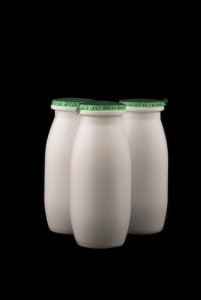 Did you know that a proven cure for acne is in your room right now? Yet it’s impossible to touch, it’s not sitting on your shelf, and it’s impossible to see.
Did you know that a proven cure for acne is in your room right now? Yet it’s impossible to touch, it’s not sitting on your shelf, and it’s impossible to see.
The answer to this riddle is lactobacillus bacteria strains. They reside inside your gut, fermenting molecules like epicatechin in cocoa to produce anti-inflammatory metabolites. Other strains flavour yogurt, creating the signature acidity and sourness. Only rarely do they migrate to your face, but a new study suggests that when interacting with skin species like p.acnes and staphylococcus, lactobacilli work wonders.
3 versions were applied: l. pentosus, l. rhamnosus, and l. plantarum. The former is rarer, while the latter two are popular supplements and abundant in humans. They were suspended in revolutionary new nanoparticles which only release their substances after being rubbed into the face.
After 8 weeks, p.acnes bacteria and staphylococcus became scattered and disorganised. If they had left it there, our acne-clearing spotlights would already swivel firmly towards lactobaccili.
However, the bacterial recipe also slashed inflammatory acne after 4 weeks, accelerating by 8 weeks. Comedogenic acne such as whiteheads plummeted until 4 weeks, holding steady afterwards.
There were no side effects; the skin irritation index was graded 0.00. Lactobacilli’s defining quality is pumping out lactic acid and in an older study, topical lactate erased 44.5% of all inflammatory acne after 8 weeks.
Green tea is so great that I would recommend it anyway, but lactobacilli are the opposite. Bacteria is a tricky subject, with hundreds of interacting species. The real world outcome is incredibly unpredictable, unlike oily skin, but this study clears the fog from our vision.
Any lingering doubts? I covered the study in full in this article. The main doubts are 1) a small sample size of ten, 2) potentially poor adaptiveness to the skin, compared to their comfy gut origins, and 3) the eventual evolution of p.acnes to target them.
Four – mangosteen
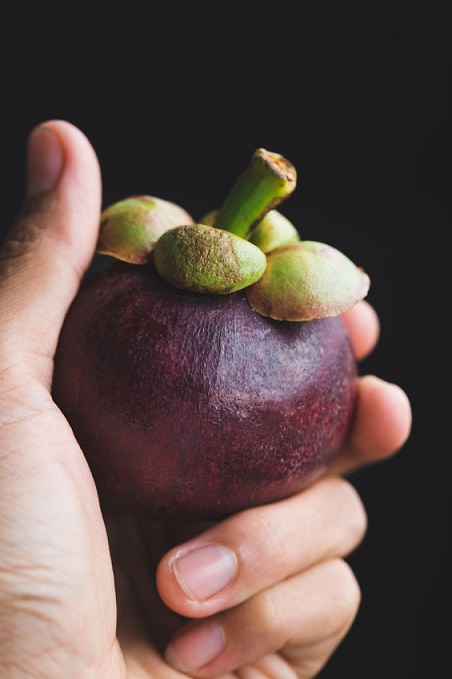 Mangosteen is a fleshy purple fruit, as common and nondescript in Thailand as apples are in England. It’s also common in acne vulgaris studies.
Mangosteen is a fleshy purple fruit, as common and nondescript in Thailand as apples are in England. It’s also common in acne vulgaris studies.
The internet is overflowing with frustrated acne patients who travelled to Thailand to de-stress but returned looking like a totally new person. Things came to head when mangosteen blocked the inflammatory chemical TNF-a when stimulated by p.acnes bacteria (study). There was one logical step forward, and it came in 2011.
The “queen of topical fruits” was applied to 40 female acne patients in a topical cream twice daily (study). This extract was proven to be rich in alpha-mangostin, mangosteen’s signature active compound.
28 days later, every type of acne fell. Microcysts tumbled by a mean number of 1.9, comedones by 2.7, pustules by 1.0, and pustules plummeted off the edge of the earth, by 5.4. The overall mean reduction was 11.1, and 83% of the formerly acne-covered women were satisfied.
Concurrently, p.acnes bacteria was observed to have imploded. Their verdict: “garcinia mangostana peel extract has therapeutic potential as a treatment for acne lesions“. The floodgates burst open and 5 years later, alpha-mangostin slashed acne by over 50% after 12 weeks (study).
The most recent study is the best yet, comparing mangosteen to the big cheese of pharmaceutical remedies, 1% clindamycin. After 8 weeks of twice daily applications, 28 acne-prone adults aged 18-40 enjoyed 67.05% reductions in inflammatory acne. Comdones (clogged pores) fell by 66.86% and clindamycin was similar, but mangosteen grows on a bushy tree while clindamcyin is manufactured using high tech laboratory equipment. Mangosteen was also combined in 2019 with aloe vera and camellia sinensis to great effect. We can’t pinpoint the true saviour, but momentum is building.
Just imagine if you were an ancient Egyptian teenager. You would receive word of this magical fruit from a cryptic travelling merchant. You would have to trek across the vast deserts of Arabia, and slash your way through Thailand’s forests while dodging tigers. Finally, you would collapse and crawl the last few inches to the swaying mangosteen tree in front of you. Nowadays, luckily, we have the internet.
Word is spreading, but only at a snail’s pace; green tea is leaps and bounds ahead.
Any lingering doubts? It’s the same as propolis – 9% reported mild irritation in the 2011 topical study. However, nobody withdrew from the study either. The 2019 study reported “no severe side effects“, but it’s conceivable that alpha-mangostine triggers sensitivities.
Five – green tea
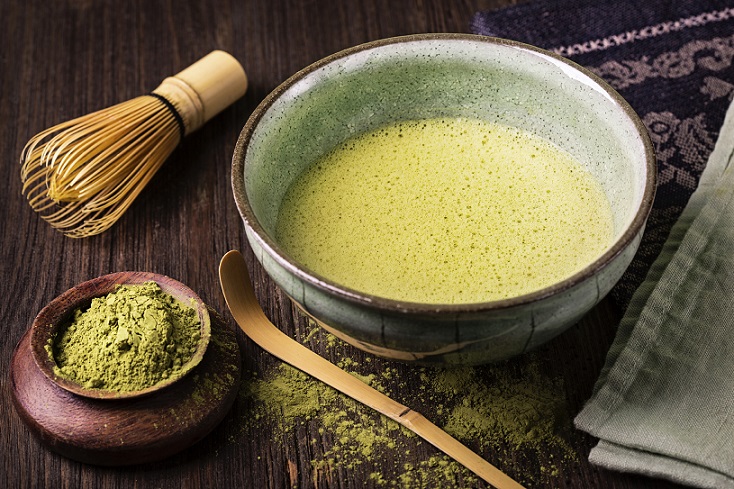 More and more, the words green tea become associated with clear skin. Green tea is proven to decrease your skin’s sebum (oil) production by 67.5% after 8 weeks, but our criteria today is strictly acne.
More and more, the words green tea become associated with clear skin. Green tea is proven to decrease your skin’s sebum (oil) production by 67.5% after 8 weeks, but our criteria today is strictly acne.
Luckily then, green tea is probably the single best tested natural remedy, beating even aloe vera. Green tea isn’t a random obsession; its compound epigallocatechin-3-gallate is among the most extensively studied natural antioxidants. It has cancer, heart-boosting and prostate protecting data galore, so trying acne was just another day at the office.
Green tea has 5 topical studies to its name, starting with this 2006 experiment applying 2% green tea lotion to 25 men and 35 women. The results were so great they singlehandedly kickstarted the whole green tea craze. The age range was great for youths, at 14-22, and after 8 weeks, inflammatory papules were reduced by 32.5%. Pustules fell by 57%, which makes sense, as whiteheads are particularly tied to the rivers of oily skin. The control failed in all attempts. 88% were satisfied with green tea and 12% were dissatisfied.
Two years later, the same Iraqi scientist gang tested 2% green tea again, for 8 weeks again, which defeated zinc sulphate (study). This time, the difference was far closer, with 51% of pustules vanishing and 48.5% of papules after 8 weeks, but the theme of acne annihilation was identical.
An Egyptian study followed in 2009. The only flaws were the small sample size of 14 women and 6 men, and the lack of a control. Nevertheless, total acne lesions plummeted by 58.33%, clearly noticeable in the mirror, from a mean of 24 to 10 pimples after six weeks.
They also devised an acne severity index, scored from 1-3. It averaged at 2.05, but dropped to 1.25 after green tea showed up, falling 39.02%. The verdict: “green tea lotion is an effective, cost-effective treatment for mild-to-moderate acne vulgaris“.
The best study of all tested 1% epigallocatechin-3-gallate, achieving a 89% reduction in inflammatory acne in 8 weeks. Our criteria today is strict, only studies on a whole remedy, but since ECGC is green tea’s signature compound, it’s as good as proven.
This remedy has probably translated most into the real world, as serums screaming “green tea” on the label (in green writing, obviously) are multiplying like rabbits.
Any lingering doubts? It’s hard to think of any. If you’re immune system is haywire, but your skin is bone dry, green tea may be slightly less amazing.
Six – African basil oil
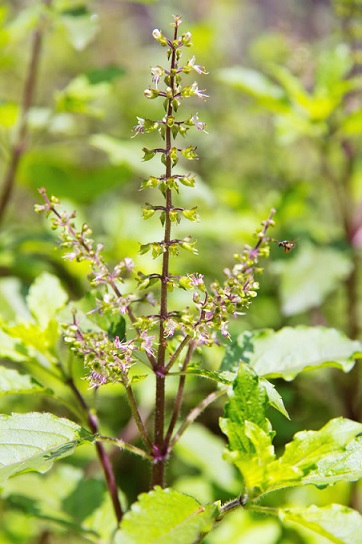 An obscure essential oil. It makes no sense that ocimum gratissimum or African basil oil has acne studies while tamanu oil does not, but that’s the situation we’re in.
An obscure essential oil. It makes no sense that ocimum gratissimum or African basil oil has acne studies while tamanu oil does not, but that’s the situation we’re in.
African basil is a folk remedy of tropical realms, rich in polyphenol antioxidants and an occasional calmer of inflammation. However, its claim to fame in African villages is easily boosting sexual health and clearing the fog of mental illness.
Unlike calming a painful wound, these are only distantly connected to acne, but a 2002 study changed the game. It was perfect for young acne-sufferers: a healthy 126-strong sample, mostly university students, all aged 20-25 years. 57 (45.24%) were male and 69 (54.76%) were female.
The three groups were 10% benzoyl peroxide, topical African basil, and a placebo. After 3 days, the mean number of papules (red, inflamed acne) fell from 11 to 5. After another 6 days, it fell to 3.
Benzoyl peroxide, prescribed by dermatologists worldwide, only just matched it, falling from 12 to 4. Pustules like whiteheads plummeted from a mean number of 9 to 3 after 9 days. Benzoyl peroxide fell from 10 to 4, while the placebo barely changed.
Importantly, no irritation or side effects were spotted. Topical medications were banned for two months beforehand, cutting away any confusion, and all patients had stubborn acne, persisting for 2-5 years.
2 years past before returning to the scene of crime, as African basil was mixed with different quantities of aloe vera (study). On 84 human beings, the mixture easily beat the antibiotic clindamycin for clearing acne vulgaris. The higher the aloe vera, the more the invisible acne became.
After raucous celebrations, African basil was quickly forgotten. No new studies have emerged since 2004, but these are so great that we barely need them.
African basil is the exact opposite to grapeseed oil, which ticks every acne-clearing box, yet has no study, like a ferrari revving its motor deafeningly, raring to go impatiently but held back by the red light. African basil oil oil looks nondescript and generic, but does have studies.
Any lingering doubts? It’s the least researched remedy here. It’s possible that African basil oil only works in certain circumstances, but large samples of 84 and 126 lay waste to those theories.
Seven – tea tree oil
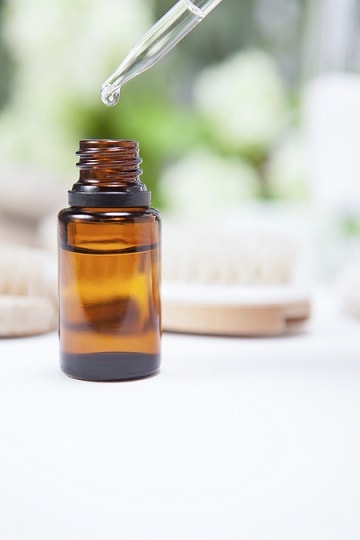 If you need one last nudge to dissuade you from accutane and antibiotics, than the amazing studies on tea tree oil should be enough.
If you need one last nudge to dissuade you from accutane and antibiotics, than the amazing studies on tea tree oil should be enough.
This Australian oil’s antibacterial powers were famous for years, killing dandruff, ringworm and hospital infection bacteria as well as p.acnes. However, compared to oily skin remedies like green tea, which are one inch from being nudged into the acne dimension, antibacterial remedies are more erratic.
P.acnes is not the only villain; if the squalene in your sebum (oil) oxidises after being bombarded with free radicals, the resulting inflammatory compounds can trigger pimples without p.acnes being involved at all.
Therefore, in 1990, tea tree oil was tested on acne for the first time (study) not counting any wise aboriginal medicine men of 10,000 years ago. It was simple yet informative: 5% benzoyl peroxide compared to 5% tea tree oil. The Australian essential oil was significantly slower, but ultimately, tea tree oil soothed the inflammatory and non-inflammatory acne in 124 humans. Its side effects were lower too.
That study is largely forgotten today, gathering dust in the neverending corridors of the acne archive vaults, but a more famous study came in 2007. 60 acne patients aged 15-25 gathered for 45 days. 30 applied tea tree oil for 20 minutes twice daily, washing it off with tap water, and 30 applied a placebo.
They must have been delighted, as the tea tree oil crew enjoyed mean reductions in the acne severity index (ASI) 5.75 fold greater than the placebo mob. Total lesion counts, a simple handcount of pimples, fell 3.55 fold greater. After six weeks, tea tree oil beat back the pustules by 47.45% and the inflamed, angry papules by 46.06%. The placebo group achieved a 2.37% rise and 9.7% fall.
I already recommended tea tree oil enthusiastically back in 2015, when I wrote the main article, but since then, yet another new study has emerged. It was slightly small, as only 14 human beings completed it, but after 12 weeks, tea tree oil reduced total lesion counts by 55%. They concluded that “tea tree oil products significantly improved mild to moderate acne and… the products were well tolerated“.
The result: tea tree oil is proven to reduce pimples. It destroys p.acnes, lowers inflammation, and banishes acne to the same netherrealm that the black death and smallpox now live in.
Any lingering doubts? Side effects again. Its antibacterial mechanisms are so strong there’s little doubt anymore, but with that strength comes small irritating potential from its alpha-terpineol and terpinen-4-ol. That’s why dilution is key.
Conclusion
There’s so many frustrating plants and oils in existence, which almost certainly benefit acne but could be derailed by one last obstacle. Tamanu oil, argan oil, and raw honey are classic examples.
However, these are remedies where that frustration has blissfully melted away. Tea tree oil and aloe vera looked fantastic for acne anyway, while African basil and propolis were much more surprising.
Regardless, if you’re looking to experiment for 8 weeks, these 7 are automatically superior candidates. You have at least a year’s worth of experimentation material here, and that’s not counting nutritional supplements like zinc.
What will gain access to the inner sanctum next? It could be essence of meerkat fur for all we know. Raw honey is always ignored, but CBD oil from cannabis is a research bonanza right now. In all likelihood, the next proven acne remedy will materialise from thin air.
Thanks for reading!